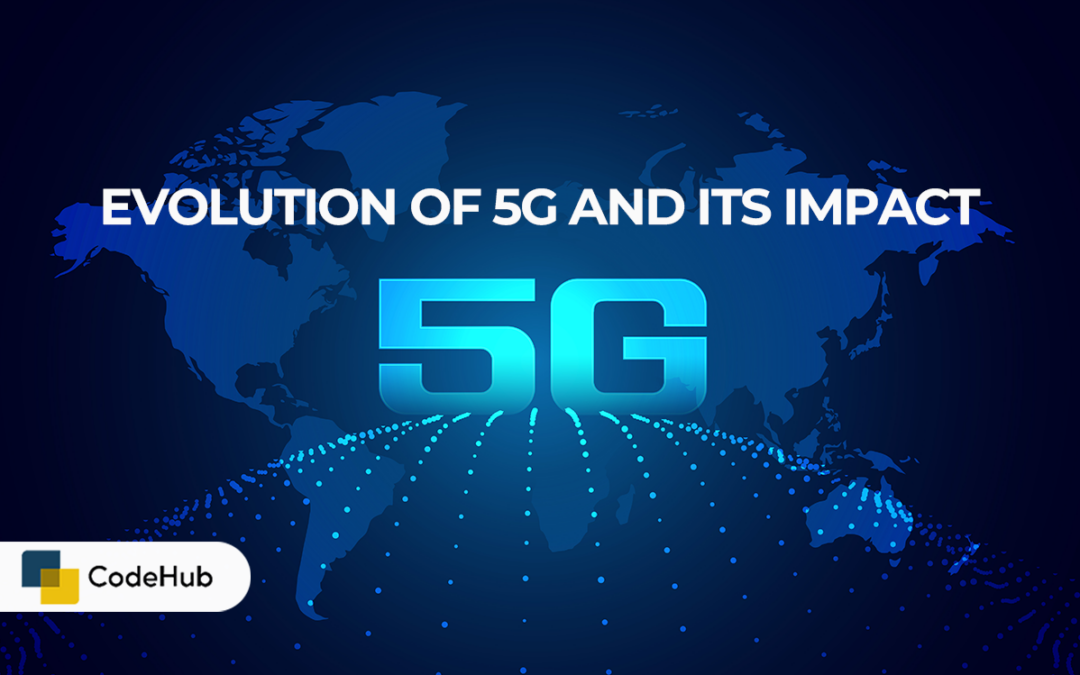The rollout of 5G technology represents a significant leap forward in global telecommunications, promising to reshape industries, enhance user experiences, and accelerate digital transformation. This blog post explores the evolution of 5G, its key technological advancements, and the far-reaching impact it is poised to have on various sectors.
Understanding 5G Technology
What is 5G?
5G stands for fifth-generation mobile networks, succeeding 4G LTE. Unlike its predecessors, 5G offers substantially faster data speeds, lower latency, and the ability to connect a vast number of devices simultaneously. These advancements enable near-instantaneous communication between devices, paving the way for innovative applications across industries.
The Evolution of 5G
1. Speed and Capacity:
- Data Speeds:
5G networks promise peak speeds up to 10 Gbps, significantly faster than 4G LTE, enabling quicker downloads and seamless streaming of high-definition content.
- Capacity:
With increased bandwidth, 5G can support more connected devices per square kilometer, facilitating the growth of the Internet of Things (IoT) and smart city initiatives.
2. Latency Reduction:
- Ultra-Low Latency:
5G networks aim for latency as low as 1 millisecond, nearly imperceptible to users. This responsiveness is critical for applications like autonomous vehicles, remote surgery, and real-time gaming.
3. Network Slicing:
- Customized Networks:
5G introduces network slicing, allowing operators to create virtual networks tailored to specific applications or industries. This flexibility ensures optimized performance and resource allocation.
4. Massive IoT Connectivity:
- IoT Expansion:
5G networks can connect exponentially more devices than previous generations, from smart appliances and wearables to industrial sensors and autonomous machines. This scalability is essential for the proliferation of smart cities and Industry 4.0 initiatives.
Impact of 5G Across Industries
1. Telecommunications:
- Enhanced Connectivity:
Telecom companies leverage 5G to offer faster broadband services, reducing congestion and improving reliability for users.
2. Healthcare:
- Remote Care:
5G enables real-time telemedicine consultations, remote patient monitoring, and even surgical procedures conducted by specialists miles away.
3. Manufacturing and Industry 4.0:
- Smart Factories:
5G facilitates real-time monitoring of production lines, predictive maintenance of machinery, and autonomous robotic operations, optimizing efficiency and reducing downtime.
4. Automotive:
- Connected Vehicles:
5G supports vehicle-to-vehicle (V2V) and vehicle-to-infrastructure (V2I) communication, enhancing road safety, traffic management, and enabling autonomous driving capabilities.
5. Entertainment and Media:
- Immersive Experiences:
5G enables high-definition streaming, virtual reality (VR), and augmented reality (AR) experiences with minimal latency, transforming how users consume content and interact with digital environments.
6. Retail:
- Personalized Shopping:
Retailers use 5G for augmented reality (AR) applications, personalized customer experiences, and efficient inventory management systems.
Challenges and Considerations
- Infrastructure Investment:
Deploying 5G requires substantial investment in infrastructure, including new towers and fiber optic cables, which can be costly and time-consuming.
- Security and Privacy:
With more devices connected and vast amounts of data transmitted, ensuring robust cybersecurity measures is paramount to protect against potential threats and vulnerabilities.
- Regulatory Compliance:
Each country has its own regulations governing 5G deployment and spectrum allocation, which can impact the pace and scope of rollout.
Future Outlook
As 5G continues to expand globally, its transformative impact on society, economy, and technology will become increasingly apparent. The ongoing development of 5G networks, coupled with advancements in applications such as AI, IoT, and edge computing, promises to unlock new possibilities and propel us into a more connected and technologically advanced future.
Conclusion
5G technology represents more than just faster internet speeds; it is a catalyst for innovation across industries, enabling smarter cities, revolutionizing healthcare delivery, enhancing manufacturing efficiency, and powering next-generation consumer experiences. As we witness the evolution of 5G unfold, its potential to reshape the digital landscape and drive economic growth on a global scale is undeniable. Embracing the opportunities and addressing the challenges of 5G will be crucial in harnessing its full potential and shaping a more connected and efficient world.

